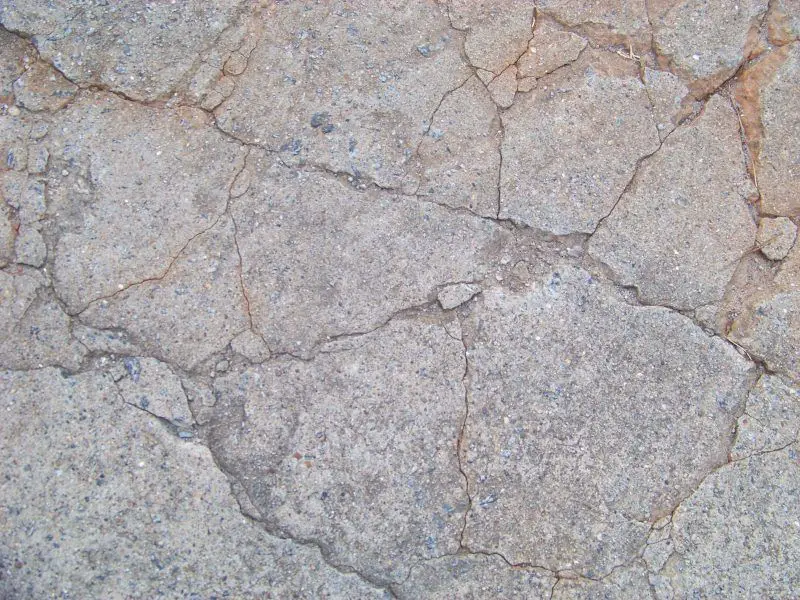These days, many homeowners use concrete for their patios. Just like other concrete structures, when concrete patios become older, they start to crack or sink because of general wear and tear, erosion, or settlement. When this happens, concrete patios will need fixing. The question is, how to fix a cracked uneven concrete patio?

While, fixing a cracked and uneven concrete patio can seem like a daunting task, the truth is that concrete repair can be easy. In fact, leveling and fixing cracked uneven concrete patio can be a fairly straightforward process. The best part is that you do not need to replace the entire concrete patio to repair cracks. You can have your cracked concrete looking as good as new in just one day.
Table of Contents
Why Does the Patio Crack?
The main issue with outdoor concrete patios is that they settle or sink. When the concrete patio sinks or settles, this occurs unevenly in different sections. This results in wobbly, unstable, and uneven concrete surfaces. When the concrete’s weight is not supported uniformly from below, concrete cracks start to form.
If you leave these issues unattended to and let the cracked concrete patio remain in this condition, your furniture may be unstable and walking on cracked concrete can stub your toes. Overall, you will have an unsightly concrete patio.
Why Does the Concrete Patio Settle?
In the first place, why does the concrete patio settle or sink? Before the concrete is installed, the ground is prepared and the earth is compacted using heavy machinery. Typically, the compacted surface usually comprises of gravel or it will have at least a layer of gravel. This is usually done to prevent the ground from sinking because of the weight of the concrete patio that is installed above.
Settlement can occur because of weather conditions or the soil below it eroding due to rainwater. It may also occur if the compacting is not done thoroughly or properly.
How to Fix a Cracked Uneven Concrete Patio
In this article, we will discuss some methods of how to repair cracked uneven concrete patio.

Resurfacing the Top
You could consider resurfacing the top of the concrete patio to repair concrete cracks. However, this is only a superficial solution and only hides the real problem. The furrows and concrete cracks on the concrete may be out of sight temporarily but the problem of settling and sinking that has left empty spaces under the concrete patio will still exist. Severe voids will cause the concrete slabs of the concrete patio to rock from one side to another and could result in a potentially hazardous situation later on.
Slab Jacking
Also known as mud jacking or slab lifting, slab jacking is an option that you can use to fix the concrete slab, irrespective of whether the entire section of the slab or certain portions of the slab has sunk. However, slab jacking is not something that you can do as a DIY project on concrete patios. This is because slab jacking requires expert knowledge and special equipment to get the best results. It may be a good idea to use concrete specialists to carry out the process for you.
In the process of slab jacking, the concrete mixture is injected into the cracks and holes. The concrete mixture is also injected under the concrete surface of the slab to raise it. The mortar mixture fills all the gaps and forces the uneven slabs to rise to the level of the neighboring ones, thus closing any holes or cracks. The mixture hardens and prevents any movement or rocking.
The advantage of this concrete repair process is that it also fills any gaps below the concrete slab where it has not sunk. At the top of the soil, it will help consolidate the soft or loose soil that is located along the upper layers and will help create a solid base that will prevent movement and water from running or pooling in the foundations.
However, since slab jacking makes use of mortar, it may be prone to erosion. Also, the final product is rather heavy and the weight may aggravate the problem of settling.

Polymer Slab Lifting
Polymer slab lifting is the most recent advancement in concrete patio repair. Compared to slab jacking, this makes use of lighter material and fewer follow-up issues.
The polymer material, polyurethane, is pumped into the cracks and holes of the concrete patio slabs. It is pumped under the concrete patio’s surface, where it fills all the voids and binds with the soil. When the polymer material solidifies, it expands rapidly and lifts the surface of the concrete to the level where it should be.
This material used in the process is very light compared to the mortar mixture that is used in slab jacking. Also, the cleanup is very quick and there are no extra muddy materials which you need to clean or wash away with water. Once the concrete slab is lifted, all you need to do is seal the cracks and then add your finishing touches to the freshly filled and leveled concrete patio surface.
However, there is one thing that you must keep in mind when it comes to the crack repair process of slab lifting as well as polymer slab lifting. It cannot be used for concrete patios that are made of several pavers or smaller stones. This is because it is not possible to lift several small pieces of stone uniformly.
Patching
If you need to repair only small cracked concrete portions of the patio, then you can use the process of patching. In this concrete repair method, a small portion of the slab is removed and then sand is packed underneath to level the slab and support it before the concrete is replaced. The damaged area where the cracked concrete must be cut and removed using a crowbar.
Then, you must fill in the sand and pack it down firmly using a tamping machine before the concrete slab is put back into place. If you do not do this, the sand will start shifting and will cause the concrete to sink again. Also, the gap around the section that has been cut must be filled to prevent any water from entering.

Veneering
Veneering is also a good way to repair concrete with cracks. If any sections are not completely even when you use sand, you can create a new layer on the concrete by using mortar. Make the surface area of the concrete rougher and more textured by using a hammer and chisel. If you are planning to veneer a portion that has been cut out earlier, then use the chisel around the edges which will give you a better finish.
Using a masonry bit, drill small holes on the surface of the concrete. Once you have prepared the surface, mix mortar very thinly and pour it on the surface of the concrete slab and carefully level it. Leave this to cure for around 30 minutes and then finish the surface using a trowel or a brush.
Extensive Veneering
If the entire concrete slab is damaged, then it may be a good idea to veneer the entire surface. To do this:
- 1You must first remove all the debris and loose concrete and brush the area and rinse the patio thoroughly with water. For best veneering results, the concrete surface must be as clean as possible.
- 2A wooden frame must be built around the concrete slab’s edges so that it protrudes two to three inches above the present slab level.
- 3You must then place a layer of sand on the surface such that all the depressions are covered and tamp it down so that when the concrete is poured, it will settle down.
- 4Then, fill the wooden frame with fresh concrete and leave it to cure as per the manufacturer’s directions.
- 5Finish the concrete using a trowel or a brush.
Most often, the first thing that crosses a homeowner’s mind when thinking of how to repair cracks and resolve the issue of a settling concrete patio is to just replace it. However, this is not a simple solution. Replacing the patio requires moving all the furniture, plants, and other items on the patio. Replacing can also affect the landscaping around the structure. Then, you need to spend money on the materials and labor. Overall, replacing your patio may turn out to be quite an expensive proposition, not to mention time-consuming too.

The problem of how to fix a cracked uneven concrete patio may call for assessing the situation and evaluating other concrete repair solutions that are available. There may not be a one-solution-fits-all remedy to repair concrete. If your home has a large concrete patio and you are facing settlement problems, instead of going the DIY route, it may be advisable to call in the professionals to sort out the cracked concrete and settling problem for you.
However, whichever concrete repair method you plan to follow, it is a good idea to fix the problem of your cracked uneven concrete patio as soon as possible to avoid more expensive repairs or replacement of the entire concrete patio in the future.Resources:
Concrete Supply Co.
Concrete Construction

